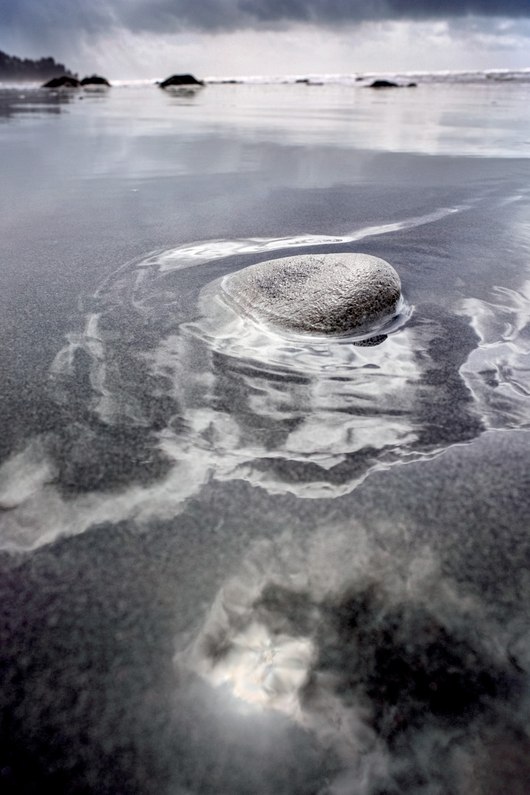Second Beach, along the central Pacific coast of Washington State, is a popular destination for Olympic National Park visitors. Even when busy, it is so long and wide that beachcombers may feel a sense of solitude, especially when the tide is out and one can roam the enormous expanse of untrampled tan, red, and black sand between the forest and the waves.
Geologically, Second Beach is built of mélange rocks, a mixture of sand, gravel, and stones churned up along the borderline between converging tectonic plates that parallel the coast. The beach is protected from the worst of winter's mid-latitude cyclones by an offshore maritime bench where storm waves break and dissipate.
Two landowners share the beach: the Quileute Indian Tribe, which owns an ancient, pristine forest through which a trail leads to the ocean, and the National Park Service, which manages the beach, where day hikes and wilderness camping are allowed. A land swap ensured continued beach access when the Park Service provided a tract of high ground to the Quileute so that the tribe could move their homes out of a low-lying floodplain prone to increasingly dangerous king tides' and the threat of tsunamis.
On this squally spring morning, I was entranced by the beach's black sand, shaded by magnetite, a glacially deposited mineral concentrated along the shore. Stretching across the beach during this morning's low tide was a wet coating over the dark sand caused by a downpour just before I took this photograph. The scrim of water temporarily formed a black mirror, merging two places into one: the beach and the sky, its ghostly visage seemingly presaged a storm's approach.
Location research and commentary by James Baker

